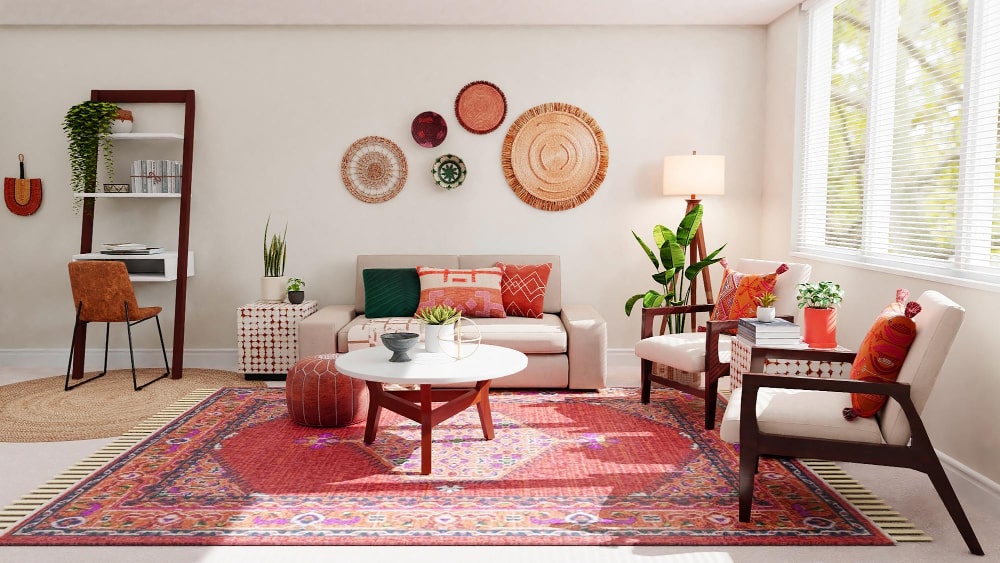Renowned Architecture Firm specializing in modern structures.
Wiki Article
Change Your Home With Vital Concepts of Interior Decoration and Looks
By comprehending the impact of color concept and the relevance of structure and patterns, one can create areas that are not only aesthetically appealing however additionally deeply individual. Attaining this stability includes even more than mere decor; it encompasses a tactical plan and an eager understanding of exactly how each component engages within a space.Recognizing Shade Concept
Understanding the concepts of color concept permits developers to develop spaces that reverberate emotionally with owners while satisfying functional needs. Each group plays an important function in developing harmony within an area.The psychological impact of shades is extensive; cozy tones such as reds and oranges stimulate energy and warmth, while cool tones like blues and environment-friendlies advertise calmness and serenity. Additionally, using complementary shades boosts visual interest, creating striking contrasts that can raise a space's allure.
Neutral colors, on the other hand, work as a functional background, allowing other layout elements to shine. It is necessary to think about elements such as lights and the space's objective when choosing a color combination, as these can alter the assumption of colors throughout the day.
Inevitably, a well-considered color pattern can change a space, fostering a sense of comfort and style that lines up with the occupants' preferences. Proficiency of shade theory is, as a result, an important ability for any kind of indoor designer intending to create unified and welcoming environments.
Accomplishing Equilibrium in Layout
Just how can designers achieve a sense of equilibrium in their rooms? Accomplishing balance in design is fundamental to developing unified insides. Designers can use three primary types of equilibrium: symmetrical, asymmetrical, and radial. Balanced equilibrium involves preparing elements uniformly around a main factor, cultivating a sense of order and harmony. This kind frequently features pairs of furniture or artwork, enhancing visual stability.Unbalanced equilibrium, on the various other hand, counts on differing elements that still achieve a natural appearance. This technique enables for more dynamic and informal setups, providing passion while keeping balance. By very carefully selecting differing dimensions, colors, and appearances, designers can produce a visually compelling space that feels balanced yet energised.
Radial balance stresses a central prime focus with aspects emitting external. This style is frequently seen in circular layouts, where furnishings and decor produce a natural surround that draws the eye internal.
Inevitably, achieving equilibrium calls for thoughtful factor to consider of scale, proportion, and the partnerships in between elements. miami luxury interior design. By skillfully applying these balance principles, developers can change rooms right into environments that feel both aesthetically pleasing and functionally harmonious, improving the general experience for owners
Importance of Spatial Awareness

An eager feeling of spatial awareness allows designers to determine centerpieces within a room, directing the customer's focus to vital features while preserving a total feeling of unity. It also helps in the critical placement of lighting, which can drastically affect the assumption of space and mood. Understanding spatial relationships enables the designer to provide to the particular requirements of residents, making certain that each location serves its designated purpose without endangering aesthetics.
Inevitably, spatial understanding is crucial here for taking full advantage of the original source the capacity of any kind of indoor space. By meticulously taking into consideration the interaction between measurements, design, and function, developers can produce environments that not just satisfy practical needs however also evoke a feeling of comfort and elegance, improving the overall living experience.
Incorporating Appearance and Patterns
Accepting a diverse series of textures and patterns can considerably enhance the visual and tactile appeal of an interior room. The critical use various products-- such as wood, steel, textile, and stone-- creates depth and passion, making a space feel extra inviting and vibrant. Incorporating smooth surfaces with rough textures can develop an equilibrium that attracts the eye and involves the senses.When including patterns, take into consideration both scale and rep. Huge patterns can function as focal points, while smaller, refined styles can complement various other components without overwhelming the room. Layering patterns, such as pairing floral paddings with striped tosses, includes complexity and a sense of consistency if carried out attentively.
It is also important to maintain a cohesive shade palette, making certain that textures and patterns work together instead of contend for interest. By selecting a couple of vital appearances and patterns, you can develop a linked visual that shows your personal design while boosting the general atmosphere of the room. Ultimately, the mindful unification of these aspects can transform an ordinary area into a sophisticated environment abundant with personality and warmth.
Personalizing Your Space
Developing a room that shows your character is important to achieving a genuinely inviting atmosphere. Personalization in interior decoration allows you to instill your special style and interests right into your home, transforming it from a mere shelter right into a shelter that speaks to that you are. Begin by choosing a color scheme that reverberates with your emotions-- bold tones can invigorate, while soft tones use serenity.Incorporate art work and decoration that reflect your passions, whether it be traveling, nature, or abstract ideas. Showing personal collections, such this as books, photographs, or keepsakes, can stimulate valued memories and produce prime focus within a space. Additionally, consider customizing useful items, like upholstered furniture, to align with your visual choices.

Final Thought
In verdict, the improvement of a home through the essential principles of indoor style and looks necessitates a detailed understanding of color concept, balance, spatial understanding, appearance, and personalization. Each aspect adds significantly to developing a harmonious and useful living atmosphere - miami interior design. By attentively incorporating these principles, people can improve the visual appeal and emotional resonance of their rooms, ultimately promoting a home that mirrors unique identifications while offering convenience and practicalityReport this wiki page